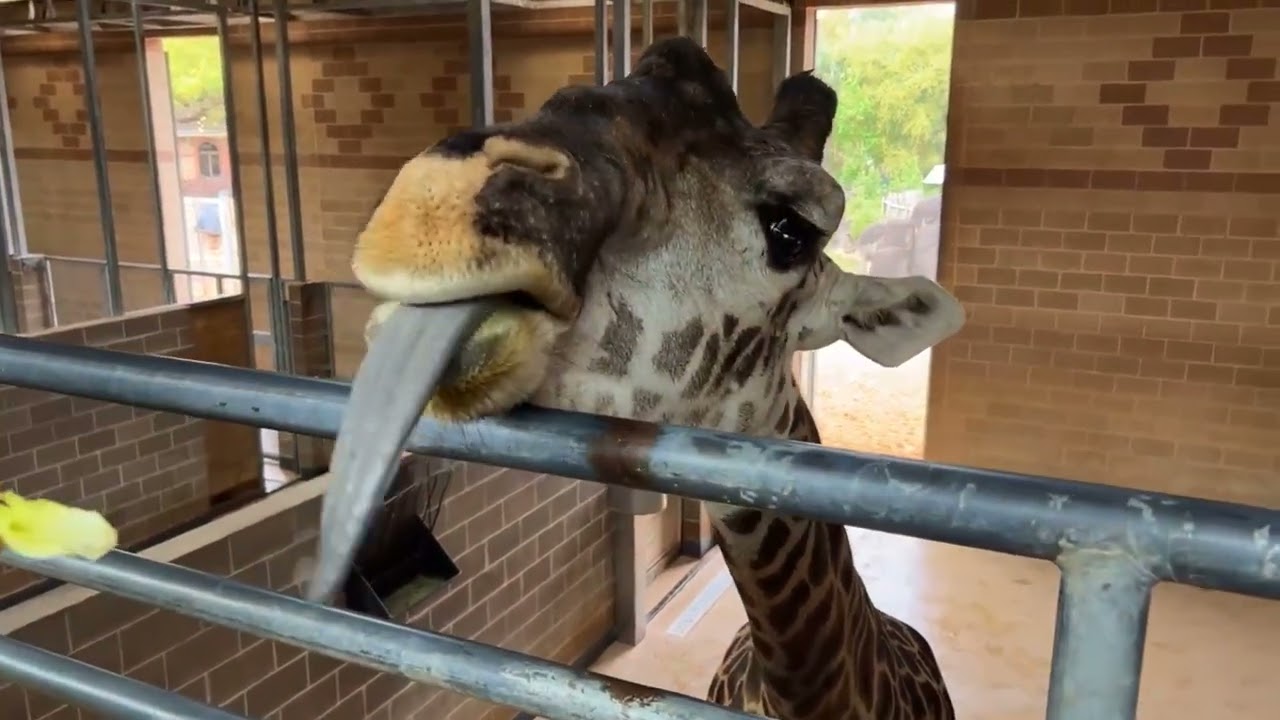– The design and significance of modern giraffe barns in zoo settings.
– The critical role of video monitoring in giraffe care and management.
– Innovations in giraffe health and welfare within captive environments.
– The impact of zoo-based giraffe programs on global conservation efforts.
– Engaging the public in giraffe conservation through education and interactive experiences.
Giraffe barns are specialized facilities within zoos designed to accommodate the unique needs of one of the tallest terrestrial animals on the planet. Modern giraffe enclosures blend architectural ingenuity with advanced animal husbandry practices to create environments that simulate aspects of their natural habitats, promoting physical health and psychological well-being. Key aspects include tall ceilings that allow for the giraffes’ impressive height, large indoor spaces that facilitate free movement, and systems for temperature regulation that mimic the giraffes’ native African climates. These barns also incorporate feeding stations that mimic the giraffes’ natural browsing behavior, encouraging them to stretch and reach as they would when feeding on high tree branches in the wild.
Video monitoring within these environments is indispensable in giraffe care, offering continuous observation without intruding on the animals’ space or disrupting their natural behaviors. This tool is critical for the early detection of health issues, monitoring birthing, and observing social interactions within the herd. Video feeds can be invaluable for zookeepers and researchers, providing insights into giraffe behavior, dietary needs, and social dynamics that are otherwise difficult to ascertain. This continuous stream of data helps adjust care strategies in real time, ensuring the health and welfare of these magnificent creatures.
Advancements in veterinary care, nutrition, and environmental enrichment have markedly improved giraffe welfare in zoos. These advancements include developing specialized diets that closely match what giraffes would consume in the wild, thus meeting their nutritional needs and promoting digestive health. Enrichment tools such as puzzle feeders encourage natural foraging, providing mental stimulation and physical activity. Moreover, veterinary care for giraffes has advanced with new medical technologies, treatment protocols, and preventative health measures, ensuring that giraffes in captivity live longer, healthier lives.
Zoos play a pivotal role in global giraffe conservation efforts. By participating in genetic research and breeding programs, zoos contribute to the sustainability of giraffe populations, with some programs aimed at reintroducing captive-bred giraffes into protected wild areas. Furthermore, zoos are at the forefront of conducting and supporting field research on giraffes, contributing valuable data that inform conservation strategies worldwide. Through these endeavors, zoos help address the challenges giraffes face in the wild, including habitat loss, poaching, and disease.
Public engagement in giraffe conservation is significantly enhanced through educational programs and interactive experiences offered by zoos. These initiatives aim to raise awareness about giraffes’ challenges in the wild and the importance of conservation efforts. Interactive experiences, such as giraffe feeding stations, allow visitors to form a personal connection with these animals, fostering a deeper understanding and appreciation for giraffes and their conservation. Educating the public about giraffes can inspire individuals to support conservation efforts through donations, advocacy, or participation in citizen science projects related to giraffe conservation.
In summary, the March 13 giraffe barn and its video monitoring capabilities represent a nexus of modern zoo management practices, veterinary care, and conservation efforts. By prioritizing the health and welfare of giraffes in captivity, these institutions provide safe havens for these remarkable animals and play a crucial role in educating the public and advancing global conservation initiatives. Through continued innovation and commitment to excellence in giraffe care, zoos contribute to the ongoing efforts to secure a brighter future for giraffes worldwide.
*****
Source Description
🦒 Have you met our giraffe herd? Stop by the giraffe feeding platform during your next visit to feed Zawadi, Asali, Gigi, and Kamili daily at 11 am and 2 pm. Our giraffes eat about 80 pounds of Alfalfa hay throughout the day, along with grain, 20 heads of lettuce, and carrots.


